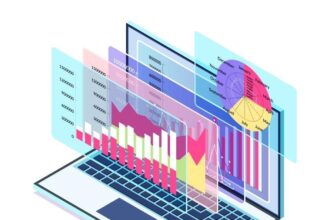DevOps is a growing field. It is growing more rapidly as new log analytics solutions are being put into place. Developers need to understand the role of distributed systems and how they further the evolution of DevOps.
Distributed systems have come a long way in the last decade. As a result, log data management has become a lot more complex. Systems today can have thousands of servers and each server could be generating log data of its own. It is becoming more important due to numerous use cases, such as troubleshooting, support, performance monitoring, production monitoring and debugging.
Despite how useful a log viewer and all the log data it provides are, the truth is that things can get overwhelming fast and systems administrators and DevOps can find themselves lost when thinking about which strategy or best practice to apply to a specific situation. That said, there are a few best practices that can work in many situations. Here are the most powerful and common ones.
Have a Strategy in Place
The last thing you want to do is to log just for the sake of logging. You need to know exactly what you?re including in your log files and why you?re logging that particular kind of data. That means you need to have a strategy in place. An organized logging plan protects you from finding yourself managing your log data manually.
As you develop your strategy, you should think about what you value most and what you want to get out of your logs. This includes such things as data hosting locations, logging methods and logging tools.
Organize the Log Data
While log data is valuable, it is very hard to extract that value if there isn?t some kind of structure to the data. You won?t be able to analyze it or get any meaningful statistics or reports out of it. That?s why it is important that you formal your logs. That is the only way you will be able to extract any meaningful insights from them.
The particular structure you choose for your log is up to you. What matters is that the format is clear and easy for anyone, whether human or machine, to read and understand. When logs are readable like this, it is much easier to troubleshoot or process the data further. There are lots of formats for data, such as key-value pairs and JavaScript object notation, also known as JSON. The point is that whatever format you use should make the data coherent and easy to understand to allow for further processing.
Have Your Logs Centralized
Whenever logs are generated, they should not remain at the point of origin. Rather, they should be collected and sent to some central location that is different than the production environment. When you consolidate log data like this, it is easier to manage and analyze it, allowing you to identify patterns and trends from different log data points of origin and also mitigating the risk of losing that data in a production environment that is scaling all of the time automatically.
Having the log data in a central location also means that support and quality assurance teams can be granted access to log data without getting access to the production environment itself, which further enhances security. The teams can then analyze the logs without interfering with the production process. An additional security advantage is that having the logs shipped to a central location prevents attackers from covering their tracks by deleting it. The logs remain intact even when the system has been compromised.
End-to-End Logging
When most people think of logging, they only think of logging from a server. However, effective logging means logging from all of the components in your systems. That way, you get a more complete view of your entire system.
End-to-end logging will enable you to understand everything that goes into the performance of your application or website as the user sees it. That means you can look at things as the loading times of pages, the delays in database transactions and latencies in the network. When you have all of that information, it is much easier to develop a better experience for the user.
Data Source Correlation
Once you?ve adopted end-to-end logging, you will notice that you are getting data from lots of different sources. That includes your content delivery networks (CDNs), the users, the servers, the applications and so on. This allows you to aggregate the data and correlate the different sources to find your patterns and trends within it.
This kind of correlation allows you to have a wider understanding of events occurring in your systems, especially when failures or malfunctions extend across the entire system. You get to see how the different components might have interacted to cause the failure.
Log Analytics is the Future of DevOps
DevOps is a rapidly growing field. A number of new solutions are being developed, which are heavily reliant on log analytics. Developers must understand the role of log analytics and develop their systems with this in mind.










